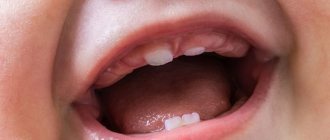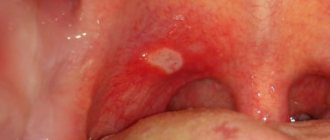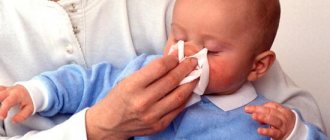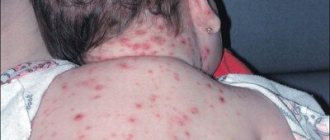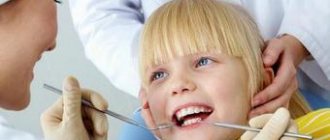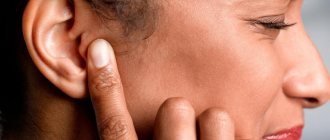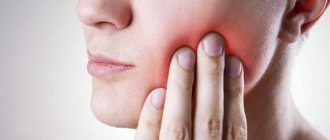Causes of stomatitis
The imperfection of local and general defenses of the child’s body makes the mucous membranes of the oral cavity vulnerable to adverse factors. And the healthy curiosity characteristic of every child has made stomatitis one of the most common diseases among children. Sometimes, for the development of an illness, it is enough to taste any less than sterile object. The main causes of the disease include the following:
- insufficiently good oral hygiene;
- minor injuries - cheek biting, scratch, etc.;
- burns, including chemical burns;
- exposure to pathogens from unwashed hands or dirty toys.
Dentists focus on stomatitis associated with biting the inside of the cheek.
This is often associated with recent dental treatment under local anesthesia. For some time after the procedure, there is reduced sensitivity in the area of the lip or cheek, so you need to eat food after treatment very carefully and only after you have waited for the recommended period of time - usually from 1 to 2 hours. The likelihood of developing stomatitis for these reasons increases after infectious diseases, previous interventions, hypothermia and other factors that contribute to a decrease in protective forces.
Causes
A child’s cheek hurts for various reasons. This is often due to:
- allergies to foods or body care products;
- teething;
- a piece of food that penetrated into the gum pocket and caused suppuration;
- stomatitis;
- deep caries;
- pulpitis;
- periodontal disease;
- periodontitis;
- gingivitis;
- an incompletely removed nerve in a dental unit;
- inflammation of the facial nerve or lymph node;
- injury that occurred after a blow or bite from the inside of the cheek;
- sinusitis;
- mumps;
- temporal tendinitis;
- temporomandibular joint disease;
- tumor;
- insect bite.
Any of these reasons cause inconvenience and discomfort. Therefore, it is important to contact a doctor in a timely manner, who will prescribe treatment. This way you can safely and quickly eliminate unpleasant sensations.
Why does a child's cheek hurt? It is difficult to install this on your own. But if such a symptom is present, adults need to take urgent measures to alleviate the condition.
Types of stomatitis
The treatment regimen for stomatitis in children is based on the type of disease. There are several types of stomatitis:
- bacterial;
- viral, including herpes;
- fungal;
- aphthous;
- angular;
- allergic;
- traumatic.
All types of stomatitis occur in children, but the most common among children under 3 years of age are aphthous, candidal, herpetic and allergic. An increase in the incidence of traumatic stomatitis is usually associated with a period of active growth of primary teeth.
It is important to understand that in some cases, stomatitis is combined with other diseases with similar symptoms and is the first sign of more serious diseases. For example, with cheilitis - inflammation of the mucous membrane and red border of the lips, food allergies, etc.
Types of sinusitis
Depending on the location of the inflammatory process, sinusitis is divided into:
- sinusitis (inflammation of the maxillary sinus) is the most common form of sinusitis, with it there is lacrimation, fear of light, pain at the root of the nose, in the cheekbones, forehead and temples;
- frontal sinusitis (inflammation of the frontal sinus) is the most severe form, characterized by pressing, aching headaches in the frontal area, which intensify with pressure;
- sphenoiditis (inflammation of the main (sphenoid) sinus) is the rarest type of sinusitis, characterized by pain in the back of the head, double vision, its development is facilitated by polyps, foreign bodies and tumors in the sinuses, deviated nasal septum, etc., and is treated surgically;
- ethmoiditis (inflammation in the cells of the ethmoid labyrinth) - is accompanied by pressing and shooting pain in the area of the bridge of the nose and the root of the nose, against the background of which the eyelids swell, conjunctivitis develops, most often appears with other forms of sinusitis, and not separately. Source: https://www.ncbi.nlm.nih.gov/pmc/articles/PMC4262843/ Shahin Abdollahi-Fakhim, Mahnaz Sadegi-Shabestari, Mehrnoush Mousavi-Agdas, Mohammad Naghavi-Behzad and Hossein Alikhah Medical treatment of allergy in children with recurrent or chronic sinusitis // Niger Med J. 2014 Nov-Dec; 55(6): 474–479
Sinusitis is divided into acute, prolonged (more than 3 months), recurrent (occurs 2 to 4 times a year).
Symptoms
Common symptoms of stomatitis are pain, burning, swelling of the mucous membrane and redness, and bad breath. Salivation also changes - it can be excessive or insufficient, with dry mouth. In some cases, there may be an increase in temperature and enlargement of the submandibular lymph nodes.
The types of stomatitis in children and treatment methods differ, as do the specific manifestations. For example, with aphthous stomatitis, only one large ulceration may appear, but with viral stomatitis, inflammation almost always takes the form of numerous elements or a rash merging into one focus.
Candidal stomatitis is characterized by the formation of a white or yellowish cheesy coating. It is easier to recognize traumatic stomatitis because it is preceded by damage or the source of injury is nearby - a chipped tooth or a rough filling.
Signs in children
The disease can begin with a simple runny nose. If it does not go away for more than a week, then the following symptoms :
- purulent discharge with a runny nose;
- dry throat;
- difficulty breathing through the nose;
- congestion of either the right or left nostril;
- increased body temperature, which may be slight;
- frequent expectoration;
- pain in the cheeks, teeth, eyes, headache;
- weakness, lethargy, loss of appetite. Source: E.I. Kamanin, I.V. Otvagin, O.A. Egorova, V.G. Tikhonov, S.I. Demko, A.A. Tarasov On the issue of the clinical picture and diagnosis of sinusitis in children // Bulletin of the Smolensk State Medical Academy, 2006, pp. 65-67
In the early stages, sinusitis is acute and all its manifestations are pronounced. If treatment is not carried out at this stage, the disease quickly becomes chronic. Symptoms may go away, but appear and disappear again and last for a long time.
Diagnostic features
A dentist can detect stomatitis during the first visual examination. But in controversial cases, laboratory tests may be required. Thus, bacterial inflammation may require identification of the causative agent of the disease and its sensitivity to antibiotics. A scraping and/or virological study will help determine the cause of the disease and prescribe appropriate treatment.
If a combination of several ailments with a similar picture is suspected, as well as if the child’s general well-being deteriorates, laboratory tests of blood and urine and consultations with other specialists may be prescribed.
Sometimes stomatitis can be the first manifestation of systemic diseases, general somatic pathology, for example, diabetes mellitus or malignant neoplasms. Therefore, a timely visit to the doctor is extremely important.
Reasons for the development of the disease
The main reason is advanced chronic runny nose. If left untreated, or if a bacterial infection occurs, acute purulent sinusitis may develop. Inflammation begins with infection by a virus. With low immunity, the likelihood of developing inflammation in the sinuses increases.
Other reasons:
- long-lasting runny nose;
- general hypothermia;
- adenoids;
- weak immunity;
- long-lasting runny nose with allergic reactions;
- a deviated nasal septum, making it difficult for mucus to exit the sinuses;
- nasal polyps;
- injury to the paranasal sinuses;
- fungal infections.
Features of treatment
As is often the case with diseases that are at the intersection of several areas of medicine, inflammatory lesions of the oral mucosa are one of the least studied areas of dentistry. Therefore, several specialists can be involved in the treatment of stomatitis in children in the mouth: pediatrician, dentist, dermatologist, immunologist-allergist, otolaryngologist, etc. This is especially convenient when you go to a multidisciplinary clinic.
Self-medication of stomatitis is unacceptable, and although it is now easy to find ready-made treatment regimens and folk recipes, it is important not to experiment with the baby’s health.
Conservative treatment is mainly used, which involves treating the underlying cause of the disease. Your doctor may prescribe the following medications:
- antibacterial drugs (systemic and local in the form of ointments): for bacterial inflammation;
- antiviral agents for herpes and other types of viral stomatitis;
- antifungal drugs for fungal diseases;
- antihistamines - both for allergic origin of stomatitis, and as part of complex therapy to reduce swelling and itching;
- symptomatic drugs - anti-inflammatory, analgesic, antipyretic.
Treatment of candidal stomatitis in infants should be carried out with caution. At the same time, it is important to pay attention to your health; sometimes the cause of such a disease can be insufficient breast hygiene during lactation.
Often, only local remedies are sufficient, but make sure that the entire oral cavity is treated with the rinse - inflammatory agents can be found on the entire surface of the mucous membranes. Healing applications can be used to a limited extent, only on areas of inflammation.
Treatment of stomatitis of any kind in children involves strict adherence to a diet. The diet should be gentle, it is important to avoid salty, spicy, sour foods and drinks, serve the child warm meals, and limit the consumption of sweets.
If traumatic stomatitis occurs, the doctor will prescribe medications to speed up healing. However, it is very important to prevent re-injury. If it was caused by sharp edges of a tooth or filling, this cause should be eliminated. The doctor will suggest grinding off the filling or replacing it, and will also choose the appropriate option for restoring the shape of the crown in case of chips and cracks.
Prevention of stomatitis
You can reduce the risk of developing stomatitis using the following recommendations:
- regular washing of toys, bottles, pacifiers, breast hygiene if the baby is breastfed;
- general strengthening activities: walks, wet cleaning, a balanced diet, moderate hardening, adherence to a daily routine;
- fighting bad habits of biting nails, pencils, etc.;
- regular dental examinations and timely interventions in case of dental injuries.
The dentists of the Family Doctor clinic treat and prevent stomatitis in children.
Advanced equipment allows us to quickly and accurately assess the condition of the oral cavity and perform the necessary studies in a short time. We practice modern approaches to the treatment of inflammatory diseases of the oral cavity and adhere to an individual approach to each small patient. Consultations with a pediatric dentist are available by appointment. To make an appointment, call the single contact center or fill out a special online appointment form with a pediatric dentist on the website, or you can also visit the clinic’s reception in person.
Prevention
To prevent your child from having a sore cheek, you need to take care of prevention. It is necessary to adhere to simple hygiene rules. It is important to brush your teeth regularly (as soon as you have them). At first, this is done not with a brush, but with a finger with gauze wrapped around it. It is necessary to teach your child to rinse his mouth with boiled water after each meal. From 6 years old, you can floss.
You should examine your child’s mouth at least 2 times a week. If you find food particles stuck between your teeth, they should be removed with a toothpick. The children's menu should consist of apples, carrots, and crackers. Calcium-fortified dairy products and vitamin-rich greens are also needed. This is necessary to strengthen dental tissues. The child should drink clean water, as it is the basis for the production of saliva that washes the mouth. It’s better to exclude sweets.
Do not allow your child's face and ears to become hypothermic. In very cold weather it is better not to walk. Colds in the facial nerve, colds, sinusitis, and mumps should not be allowed to occur. You should visit the dentist twice a year (even if there are no complaints).
